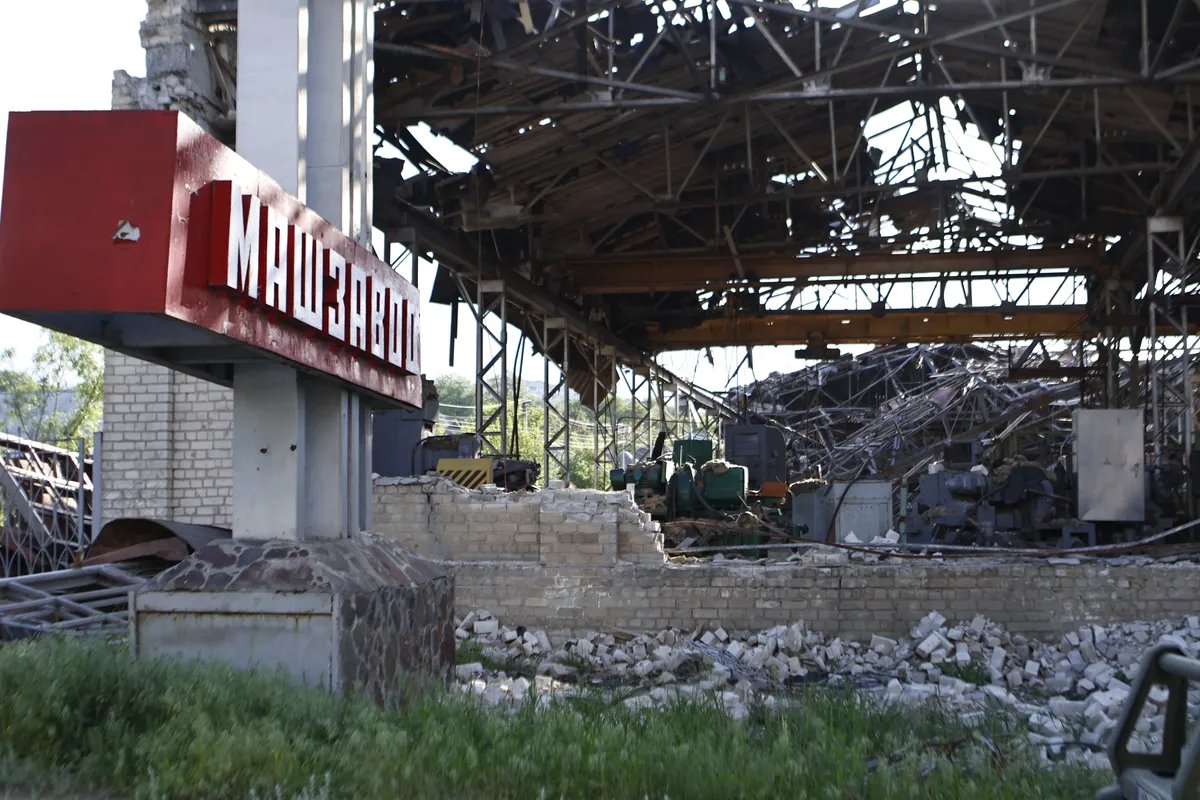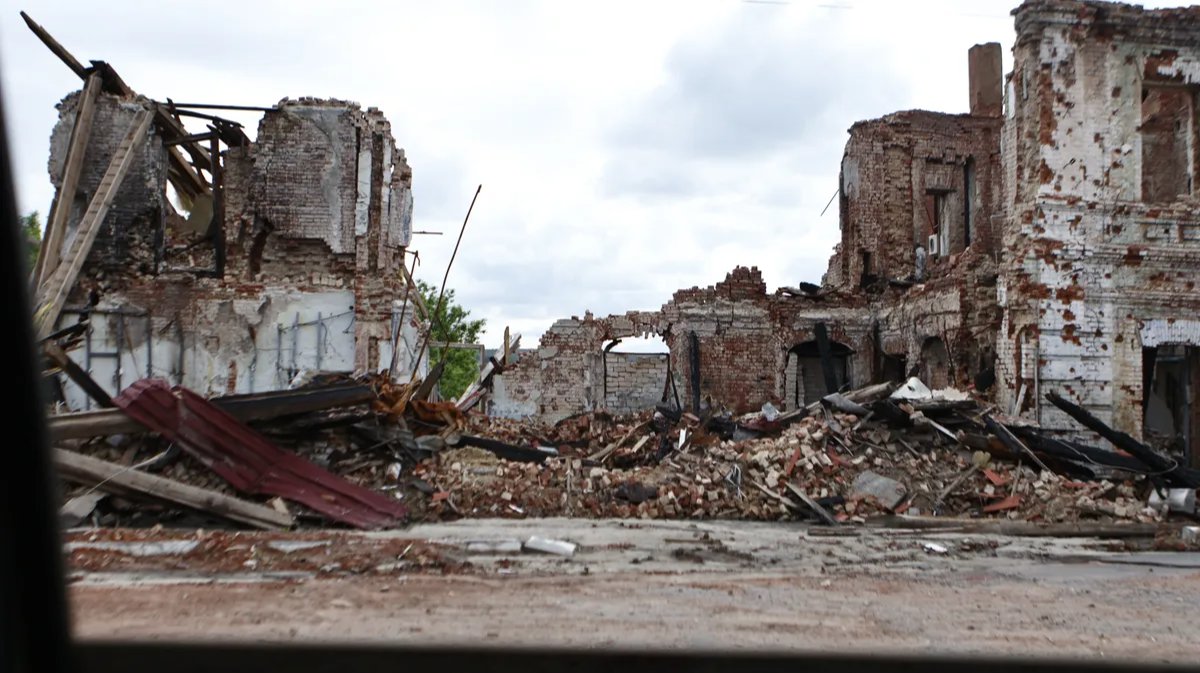What is happening near Kupyansk?
Russia has amassed an attack group of eight assault units near Kupyansk, Oleksandr Syrskyi, head of Ukraine’s ground forces, said recently, adding that the Russians’ goal is to break through the Ukrainian defence and “go directly to Kupyansk”.
The fighting is now extremely intense, Syrskyi noted: the Russian army has made an unsuccessful attempt to break up the Ukrainian group of forces with a blow to the flank and encircle some of the defending units with an offensive from the Novoselivske area.
In the meantime, Ukraine is evacuating 37 settlements in the Kupyansk district of Kharkiv region. The head of the Kharkiv regional administration, Oleh Synyehubov, said that approximately 11,000 people, including 600 children, are subject to mandatory evacuation.
Pro-Russian Telegram channels write that “Russian forces are approaching Synkivka, one of the last villages before Kupyansk”.
“Kupyansk, which is only seven kilometres away from the Russian army’s positions, is in the target zone of Russian artillery, as are the Ukrainian military facilities [surrounding Kupyansk],” Moscow’s propaganda claims.
What could be next?
"Russian troops have been in the vicinity of Kupyansk for almost a year now, ever since their retreat from Izyum,” Roman Svitan, a Ukrainian military expert, told Novaya-Europe. “Ukrainian artillery fends off any Russian attacks on Kupyansk or the Kupyansk-Uzlovaya rail station. The Russians have about 100,000 troops concentrated along the entire Luhansk front. But so far their attacks have yielded nothing.”
Svitan claims that Ukraine has erected a daunting line of fortifications in this area. And the swampy terrain, criss-crossed by four rivers, precludes any large-scale offensives. Kupyansk itself is divided in two by the Oskol River. Should the Russian army capture one of these districts, it would have to further cross the river from the low eastern bank to the high western bank.
“Units made up of convicts are now very actively losing resources,” Oleksandr Musiyenko, the head of the Centre for Military Legal Studies, told Novaya-Europe.
“Russia is now bringing fresh forces into combat. We can assume that the Russian command had aimed to seize the initiative and block Ukrainian offensives in the south and near Bakhmut.
They planned that the Ukrainian army would use strategic reserves to repel the attacks.”
If the Russian army succeeds in breaking out of the battle area, it will pose a threat to the Ukrainian troops in the areas of Belohorivka and Bakhmut. This will give Moscow’s propaganda a trump card, allowing them to declare that it is Russia, not Ukraine, that is advancing. If the fighting drags on into the colder months, with the weather complicating the use of combat equipment, the Ukrainian attacks will definitely choke. However, Oleksandr Musiyenko maintains that Ukraine currently has enough resources both for the offensive in Zaporizhzhia region and for the defence in Kharkiv region.

The Kupyansk machine-building plant, destroyed by Russian shelling. Photo: Yan Dobronosov / Global Images Ukraine / Getty Images
Roman Svitan believes that in order to capture Kupyansk, Russia will have to transfer units from other areas of active combat. If Moscow manages to build up a significant force with a lot of equipment in the area, this could indeed put pressure on Ukraine’s army. But then Kyiv could also use strategic reserves or redeploy troops from less challenging areas of the front. So far there have been no reports of troops meant for the Ukrainian offensive being used to defend Kupyansk.
“In these area, small units can hold back superior enemy forces,” says Roman Svitan. “Russia will be unable to advance provided that [Ukraine] receives a steady flow of ammo supplies. Today Ukraine received cluster munitions from its allies, which are very effective against an attacking enemy.”
Is there a threat of Russia seizing Kupyansk?
“Despite the ‘fog of war’, which prevents us from making confident statements about what is happening on the front line, it is obvious that the current battlefields are still quite far from Kupyansk,” Israeli military expert David Sharp told Novaya-Europe. “Russia has made some progress in the Kupyansk area, but nothing significant. In one of the sections near the Zherebets River, Ukraine’s forces managed to push the Russians back. In this war, three or seven kilometres is a long distance to advance. The Kupyansk-Uzlovaya rail station and a small part of the city are located on the eastern bank of the Oskol River. Even if the Russians manage to reach the river, it will be extremely difficult to cross it.”
David Sharp agrees that Russia’s main task appears to be the diversion of Ukrainian troops from Bakhmut and the southern front, where the Ukrainians are now advancing. However, he points out that the Russians are using a fairly medium-sized force to attack, supported by artillery and aviation. The Ukrainian command will have to decide how big the threat of Kupyansk getting captured actually is.
According to Sharp, the Russian side often cites the capture of small villages in the “grey zone” as examples of its territorial gains.
“There have been reports that Russia has concentrated a strike group of 100,000 troops with more than 900 tanks on the line from Kreminna to Svatovo,” Sharp continues. “Clearly, not all of these units are right on the front line. Moscow was able to assemble such a force because the area is close to Russia and has conveniently located railway lines. Ukrainian intelligence must have known for a while that this force was being assembled. It is clear that Kyiv has taken measures to mitigate the danger of a Russian offensive. Therefore, I do not believe that there is currently any threat of Russia capturing Kupyansk”.
Join us in rebuilding Novaya Gazeta Europe
The Russian government has banned independent media. We were forced to leave our country in order to keep doing our job, telling our readers about what is going on Russia, Ukraine and Europe.
We will continue fighting against warfare and dictatorship. We believe that freedom of speech is the most efficient antidote against tyranny. Support us financially to help us fight for peace and freedom.
By clicking the Support button, you agree to the processing of your personal data.
To cancel a regular donation, please write to [email protected]

